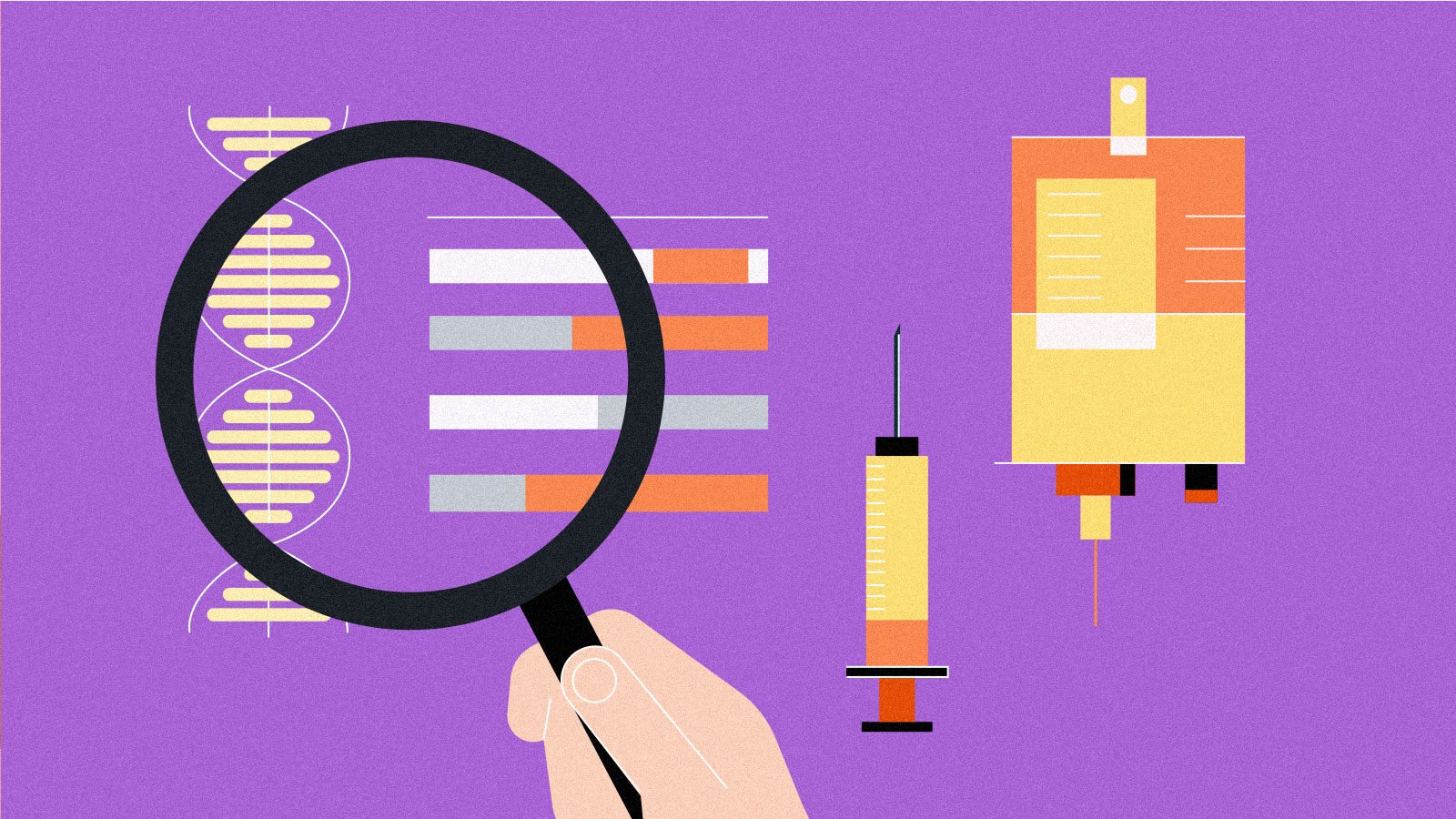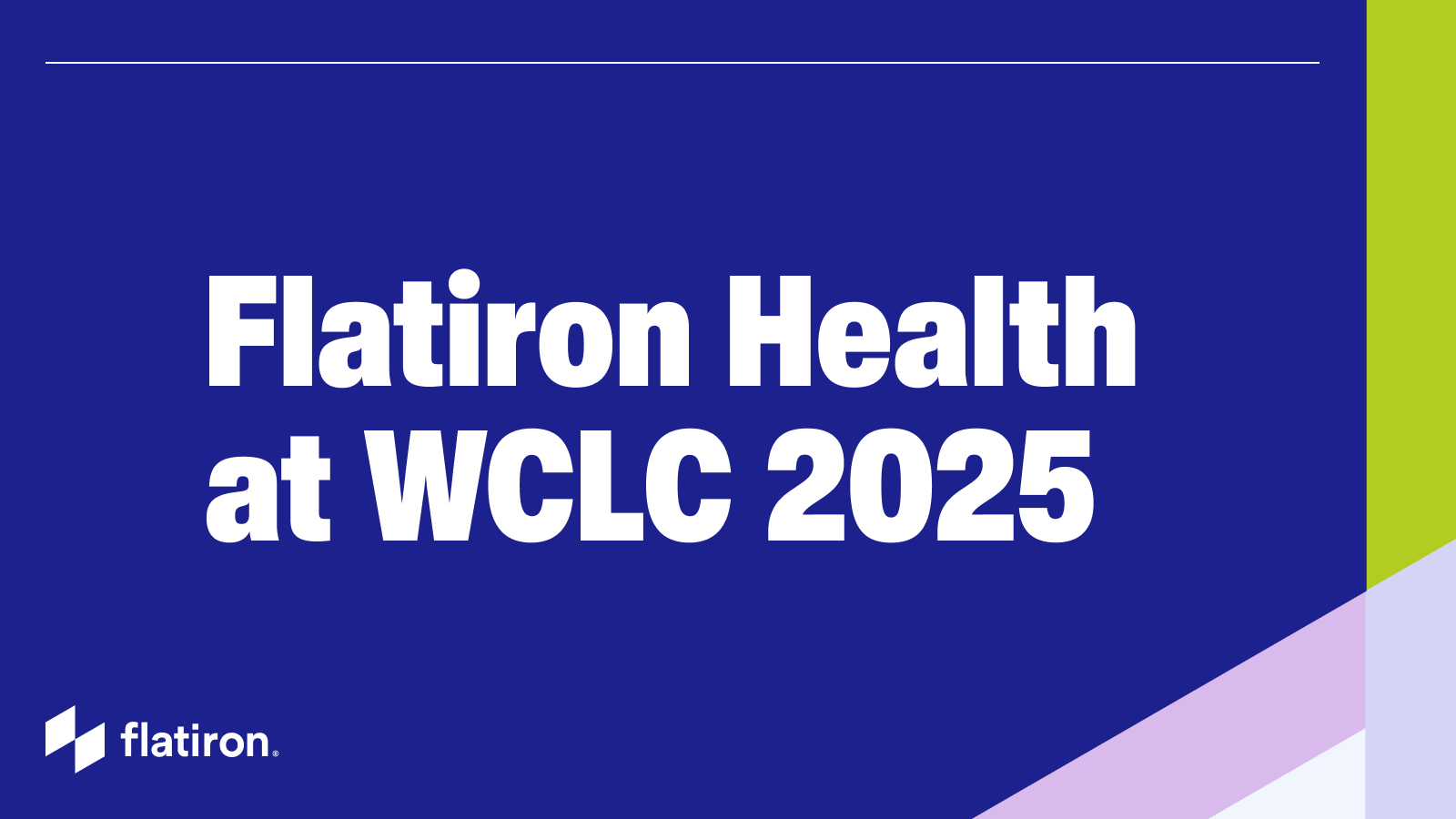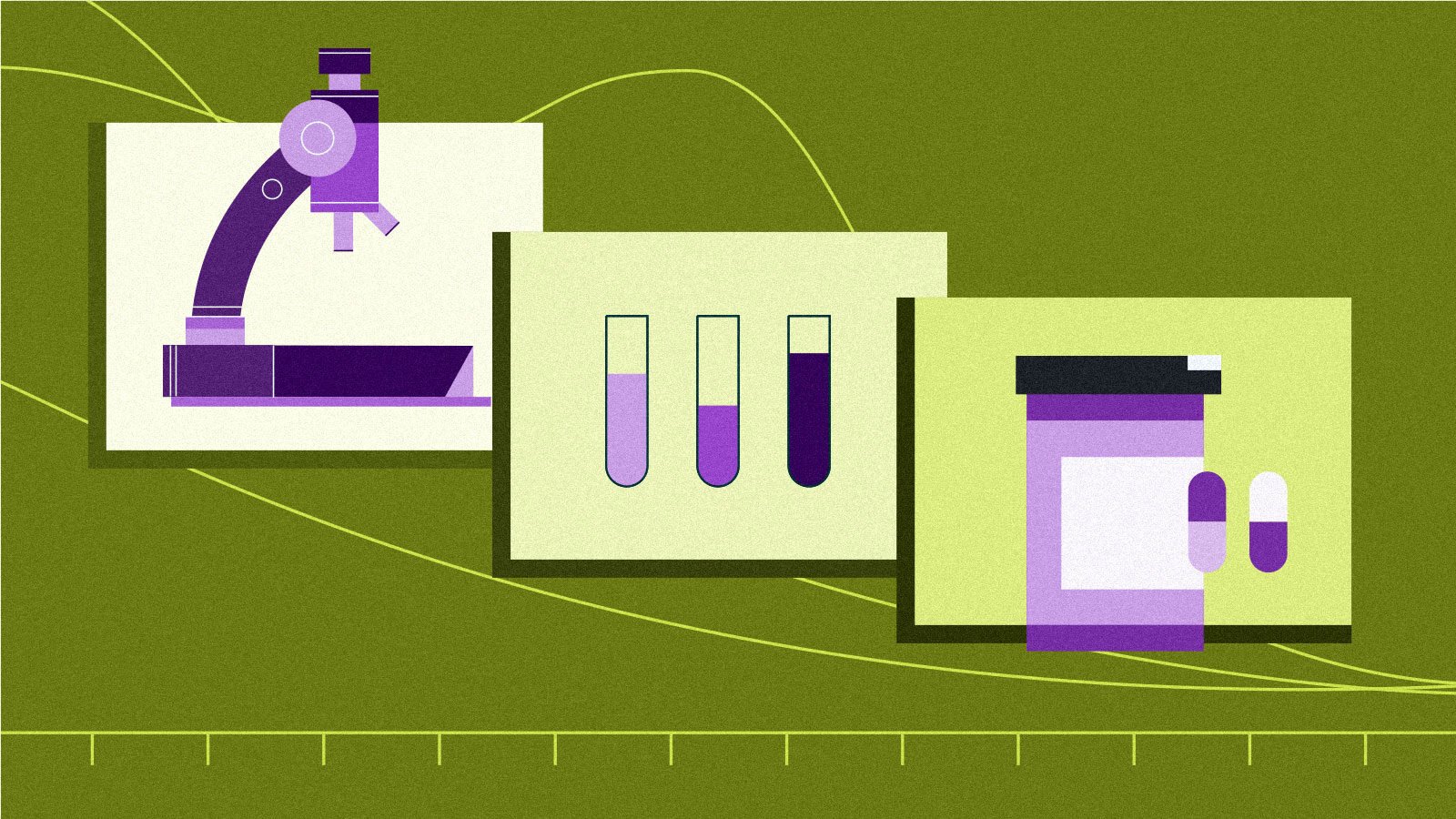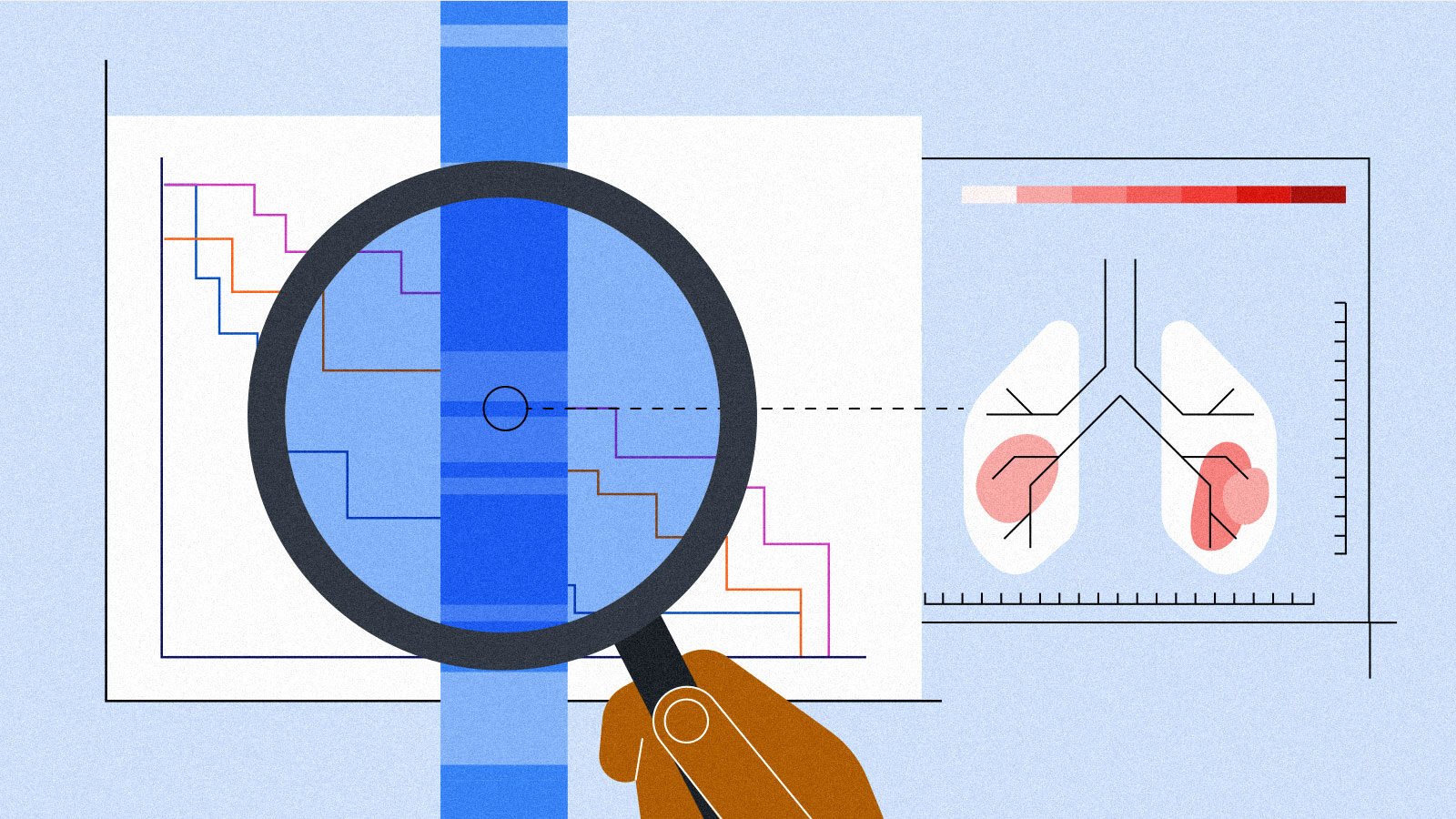Lung cancer is one of the most active areas in cancer research today, and for good reason. With 230,000 new cases a year in the US (80-85% of which are non-small cell lung cancer cases, or NSCLC), it’s slightly less prevalent than breast and prostate cancer but it's far more deadly, with more people dying of lung cancer each year than of colon, breast, and prostate cancers combined according to statistics from the National Cancer Institute.
However, there are encouraging signs. More people are quitting smoking (or deciding not to smoke in the first place) and the number of lung cancer diagnoses has decreased considerably in the past few years. The death rate has dropped too, thanks to recent breakthroughs in treatment options, from immunotherapy initially developed for late stage advanced NSCLC moving into front-line therapy (and more recently showing efficacy in the early disease setting as well) to more targeted therapies aimed at specific molecular subtypes and actionable genetic alterations. But the scale of the need, along with the growing complexity of the treatment landscape, make it all the more urgent for life science companies active in the lung cancer space to boost their clinical research capabilities.
More and more, our partners share that they need access to a broader set of evidence across diverse patient cohorts at scale throughout the drug development cycle. For us at Flatiron, it is our unique and flexible approach to real world evidence generation that can support the innovation of new therapies to address such complicated disease spaces within oncology. To reach a breakthrough point in the treatment of lung cancer, the industry needs to lean into what RWE has to offer. RWE has the ability to support crucial NSCLC research at various stages of the drug development lifecycle. With over 280,000 NSCLC patients in its network ranging from early to advanced/metastatic stages, Flatiron can support more NSCLC studies than ever before with larger cohort sizes across all sub-cohorts of interest, including but not limited to the early disease setting, biomarker status and treatment regimen.
Below are three recent examples of ways in which RWE supported innovative NSCLC research. This work can be leveraged when considering your own organization's research initiatives and to evaluate how RWE can benefit that work to drive innovative solutions and improve the lives of patients.
-
Discovery: To identify biomarkers associated with acquired resistance to targeted therapies
-
Diversity Planning: To demonstrate the impact of expanded eligibility criteria on patient diversity in clinical trials
-
Regulatory submission: To characterize the natural history of disease and evaluate outcomes in support of a New Drug Application
Discovery:
Identifying biomarkers associated with acquired resistance to targeted therapies
A biopharma partner was able to reproduce clinically-established markers of therapeutic resistance using clinical data from EHRs and comprehensive genomic profiling data
With the rapid adoption of targeted therapies to treat cancer patients at the metastatic stage, there’s a growing need for biopharma companies to study resistance to those therapies. By learning what biomarkers are associated with that resistance, they can look for ways to overcome it and anticipate potential mechanisms of resistance for new therapeutic targets.
A big challenge, however, is the lack of systematic genomic testing in clinical practice. Some patients have a comprehensive genomic profile (CGP) done prior to treatment, others around the end of the line of therapy, but very few get both. A biopharma partner wanted to test whether retrospective RWE could be used to perform analyses of both pre- and post-treatment cohorts and clearly establish the prevalence of genomic alterations after a given line of treatment.
Using the longitudinal Clinico-Genomic Database (CGDB) from Flatiron Health and Foundation Medicine (FMI), the researchers were able to successfully reproduce a number of well-established cases of therapeutic resistance. Among them, EGFR T790M mutations in advanced NSCLC patients treated with first-generation EGFR inhibitors (erlotinib, gefitinib); and ESR1 mutations in HR+ breast cancer patients progressing on endocrine therapies other than fulvestrant. The same approach might be used in the future to not just reproduce known cases of therapeutic resistance but to identify resistance associated with new targeted treatments.
Diversity planning:
Demonstrating the impact of expanded eligibility criteria on patient diversity in clinical trials
Flatiron Health used real-world data to identify clear opportunities to broaden eligibility criteria and close the recruitment gap in advanced NSCLC clinical trials for underrepresented populations
Patient representativeness is critical in clinical trials, but recruitment and retention challenges often result in the underrepresentation of certain populations, limiting the utility and generalizability of findings. FDA guidance encourages the use of various data sources, including real-world data (RWD), in developing protocols for clinical trials, and one of the ways that RWD can be used is in helping sponsors assess the impact of expanded eligibility criteria on patient diversity for their trials.
Flatiron used its nationwide EHR-derived de-identified RWD database to examine the effect of broadening eligibility cutoffs for criteria related to ECOG, ALT, AST, ALP, bilirubin, eGFR, CrCl, HGB, ANC, or PLT. That retrospective real-word study covered nearly 62,000 patients with advanced NSCLC from 1/1/2017 to 11/30/2022.
Using logistic regression, the researchers found that expanding eligibility criteria could increase the recruitment of female patients by 75% and cut the gender gap from 43% to 47% female. Similarly, they found that they could boost recruitment for Black and older (75+) aNSCLC patients by 86% and 123% respectively, and close the race and age gaps in the process: from 7.8% to 8.9% for Black patients, and from 20% to 28% for patients over 75 years of age.
This study demonstrates that RWD can be used to inform eligibility criteria in clinical trials to address patient diversity. Oftentimes, the resulting, more diverse eligible population might have clinical outcomes that differ from a cohort defined by more restrictive criteria, but there too, RWD can provide insights into the impact of an expanded cohort by comparing the hazard ratios of the two cohorts for different endpoints including real world overall survival (rwOS) and other important outcomes.
Regulatory submission:
Characterizing the natural history of disease and evaluating outcomes in support of a New Drug Application
A sponsor leveraged Flatiron Health RWD to characterize the natural history of disease and describe antitumor effectiveness for standard of care therapy in support of a New Drug Application
A biopharma company developed a targeted therapy to treat NSCLC patients with EGFR exon 20 insertion mutation. It’s a rare mutation that occurs in only 2% of patients, and existing treatment options had limited efficacy. Given the lack of approved targeted therapies and the ineffectiveness of other treatment options at the time, the sponsor decided to use RWD to characterize the standard of care and contextualize the clinical outcomes of its new investigational therapy.
The clinical trial consisted of a dose-escalation study in patients with advanced refractory NSCLC, an expansion study in multiple molecularly and histologically defined expansion cohorts, and a test cohort evaluating activity of the new drug. The primary analysis focused on the test cohort and a cohort composed of platinum-pretreated patients, and it found significant improvements in favor of the test cohort.
This was a complex study involving dozens of sites in Asia, Europe and North America. The sponsor worked with Flatiron Health to develop a comprehensive RWD protocol and statistical analysis plan (SAP) to support the study, and the analysis included multiple real-world endpoints, including confirmed objective response rate, progression-free survival, and overall survival. The partners worked together to pre-specify the study with the FDA, respond to FDA questions throughout the project, and integrate the study results into the totality of evidence for the company’s New Drug Application (NDA) filing.
The FDA considered the real-world study to be supportive and gave accelerated approval to the new therapy.
Lung cancer care is constantly evolving, with treatments approved in the advanced setting moving into earlier lines of treatment and new targeted therapies entering all lines of therapy, making treatment selection and sequencing increasingly complex. While there’s no one-size-fits-all solution that can meet the industry’s evidence needs across all research questions, tailored RWE, combined with innovative collaboration, will answer for the diverse needs of lung cancer research across the product development lifecycle.
As shown through these three case studies, while top-quality data forms the basis of modern RWE solutions, it’s important to remember that it’s not all about the data. Leveraging the expertise of biostatisticians, epidemiologists, and data scientists, like my team at Flatiron, is key to unlocking research that improves the lives of patients.
Flatiron’s team of experts, combined with our 280,000+ lung cancer patients across 4 of the largest oncology markets in the world (US, UK, Germany and Japan), is powering more lung cancer studies than ever before with cohorts that enable greater breadth and depth of analysis.
Have questions or want to learn more about how Flatiron’s Evidence Solutions are transforming oncology research across oncology portfolios? Contact us to learn more.



